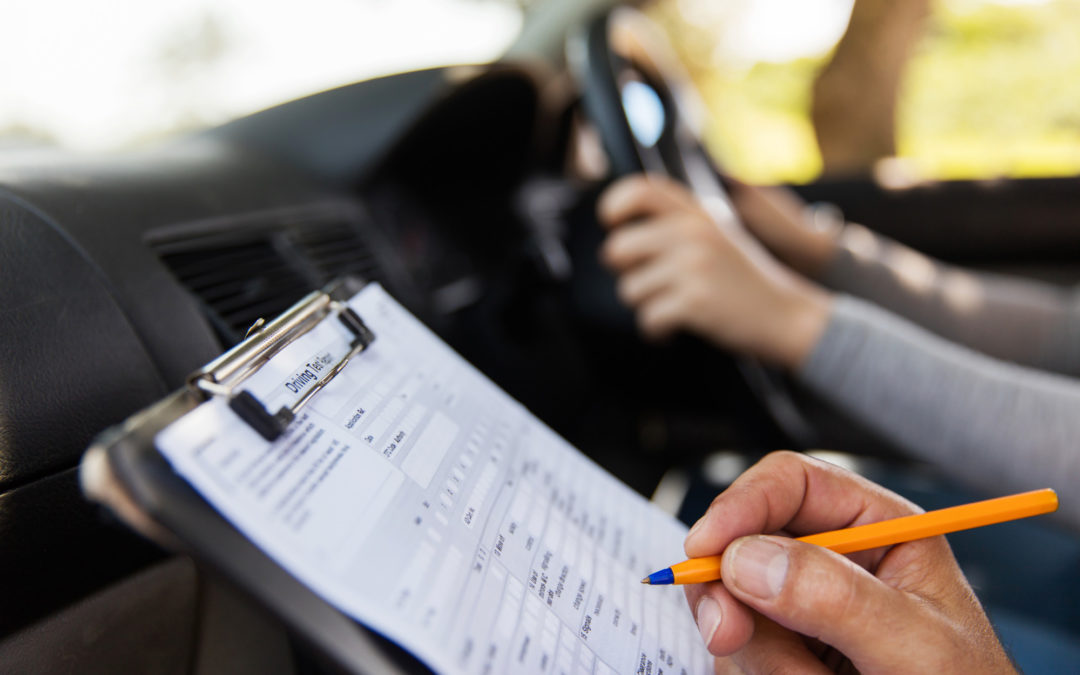Taking a driving test can be a nerve-wracking experience. It’s not uncommon for even the most experienced drivers to make mistakes. However, it’s important to remember that many mistakes can be prevented with preparation and the right approach.
In this blog post, we will discuss the top 10 driving test mistakes and how to avoid them. We’ll also discuss the most effective way to prepare for a successful driver’s test.
- Failing to check mirrors: One of the most common mistakes made during a driving test is failing to check mirrors regularly. Remember to check your mirrors before changing lanes, turning, or making a maneuver. This will help you stay aware of your surroundings and avoid any potential hazards.
Tip: Before taking your test, practice checking all your mirrors with enough movement that it is obvious to your passengers that you are doing so. This motion will not only set the movement in your muscle memory, but it will make sure that your actions are noticed and recorded by the person evaluating you during the test.
- Speeding: Exceeding the speed limit is another common mistake during a driving test. It is important to obey posted speed limits and drive at a safe and appropriate speed for road conditions.
Tip: Practice driving in the area where you will be taking your test so you can familiarize yourself with the speed limits. However, you should never assume you know the speed limit for a given area. Stay alert to posted speed limits and adjust your speed accordingly.
- Failing to signal: Failing to use turn signals, or not signaling soon enough, is another way you can be tripped up during a driving test. Your examiner will want to make sure you know what maneuvers require signaling and that you know how far in advance to signal.
Tip: Make sure to use your turn signals when changing lanes, turning, or making a maneuver. This will help you communicate your intentions to other drivers and avoid any potential collisions. Be sure to review the driving regulations for your area so you understand how far in advance of a turn or lane change you need to signal, and practice calculating that distance prior to your exam.
- Improper lane changing: Improper lane changing includes improper signaling, but it also can be the result of failing to use the proper technique when changing lanes. Driving test examiners will be on the lookout for this common mistake.
Tip: Remember to check your mirrors, review your blind spot, use your turn signals, and make sure it’s safe before changing lanes. Keep in mind that, since you are the one changing lanes, none of the other vehicles are responsible for speeding up, slowing down, or making room for your lane change.
- Not following the examiner’s instructions: Driving is all about following instructions, which is especially true when you’re taking your driver’s test. Not following the examiner’s instructions is a quick and easy way to fail your test.
Tip: It’s important to pay close attention to the instructions given by the examiner during the test. Never assume; ask questions if you need clarification. Your examiner would much rather answer a question or two than be put in a potentially dangerous situation because you didn’t understand the instructions.
- Failing to obey traffic signals and signs: Running a red light, failing to yield, and driving above the speed limit are dangerous behaviors that will result in a failed driver’s exam. Failing to obey traffic signs and signals is also dangerous and could cause injury to you, your passengers, and others around you.
Tip: The solution to this challenge starts with your homework. Study your driver’s manual carefully to make sure you recognize all of the signs and signals and understand the necessary behavior. Get in lots of driving practice before your test so that responding to traffic signals and signs is second nature when you get behind the wheel for your 3exam.
- Not using proper parking techniques: During your test, you will be asked to park the vehicle in a safe and correct manner. Parking is difficult for many drivers, especially parallel parking, which makes this a common challenge that impacts the success of a driver’s exam.
Tip: Being successful at parking is typically the result of practice. But be careful not to practice a single type of parking. You may be asked to park in a narrow stall between two large vehicles at a shopping mall, or you might be asked to parallel park on a city street. Make sure to use the correct parking technique for the situation.
- Distracted driving: Distracted driving is a major issue on the road and it’s also a common mistake made during a driving test. Your examiner needs to know that you can focus on the driving task in order to keep you, your passengers, and others on the road safe.
Tip: Avoid using your phone or other electronic devices while driving. Setting your phone to Do Not Disturb or turning it off completely is a best practice any time you get behind the wheel, but it is especially important during a driver’s test. Even a phone on silent that’s resting in your pocket may temporarily distract you with its vibration.
- Failing to anticipate potential hazards: Many driver’s license candidates make the mistake of not anticipating potential hazards on the road. Keep in mind that your exam will take place under real-world circumstances, and unexpected hazards are always a possibility.
Tip: Stay alert and be prepared to respond to unexpected situations, such as pedestrians or construction. This is another situation in which practice is the best preparation. The more hours of driving you have under your belt, the better equipped you will be for responding to unexpected hazards.
- Not being prepared: Lastly, not being prepared is a common mistake made during a driving test. A lack of preparation often leads to drivers being flustered and making poor driving choices that result in examination failure, accidents, or other negative impacts.
Tip: Make sure you arrive at the test site on time and have all the necessary documents and equipment. Do some research on your state’s Motor Vehicle website to understand the examination procedure. You may need to complete a written exam before taking the driver’s test, and you will need to have a vehicle with all parts in good working order. Preparation is the key to success.
DriveSafe Online can help you pass your driver’s test.
The most effective way to overcome a lack of preparation for your driver’s test is to take an online traffic school course before you schedule your driver’s test. DriveSafe Online courses provide state-specific information that will prepare you to pass your driver’s examination with ease. The course can be taken on any device and on your schedule, and it gives you all the tools you need to become a safer driver.
When you take a DriveSafe Online safe driver course, you will learn about driving laws and regulations, as well as effective defensive driving techniques that will keep you safe on the road.
Driving tests can be stressful, and it’s important to stay calm and confident during the test. If you do make a mistake, don’t dwell on it. Instead, focus on the present and continue to drive safely. Remember that the test is designed to assess your ability to drive safely, not to trip you up.
If you do make a mistake during the test that results in not earning your license, don’t beat yourself up. Instead, take the time to learn from your mistake and use it to improve your driving skills. If you understand why you made the mistake, you will be less likely to make the same mistake again in the future. And remember that the examiner is simply trying to keep you and everyone else on the road safe.
Start your driving journey today with a DriveSafe Online safe driver course.
Want more information? Learn how to drive safely in big cities.

Patrick M. is Editorial Director for the always expanding DriveSafe Online library of courses. With over two decades of experience developing award-winning training, he now focuses on innovating online driver safety training. Pulling from his background in journalism, he steers the wheel behind the creation of top-tier content that promotes a better journey—whether on the digital highway of learning or the real roads we travel every day.
